Postcards of things other than the Cabin John Bridge

The Baltzley's Treakle Camp at Cabin John
Cabin John postcard images
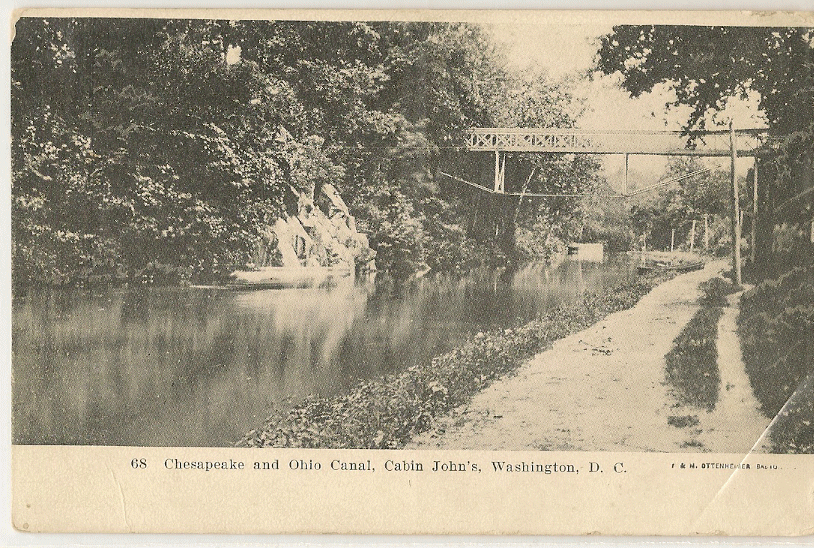
The Bobinger bridge across the canal
Cabin John postcard images
Nearly all of the postcards that have been published on Cabin John feature the great aqueduct bridge. The bridge was the primary sight-seeing feature and thus captured the eyes and hearts of visitors. This is a shame as there are many beautiful areas in Cabin John.
Somehow the Cabin John Hotel appears to have escaped being captured on a postcard; this is somewhat odd as the Bobinger Brothers who were running the hotel when postcards first appeared (ca 1893) were usually quick to utilize the newest methods available to promote their business. There are rumors that a Cabin John Hotel postcard exists, but the writer has never seen one.
The top left card was published by Edwin Baltzley, one of the founders of Glen Echo. Edwin owned land near the river in Cabin John, naming it Treakle Camp after one of his family's favorite camping foods; toast with treakle (molasses) on it.
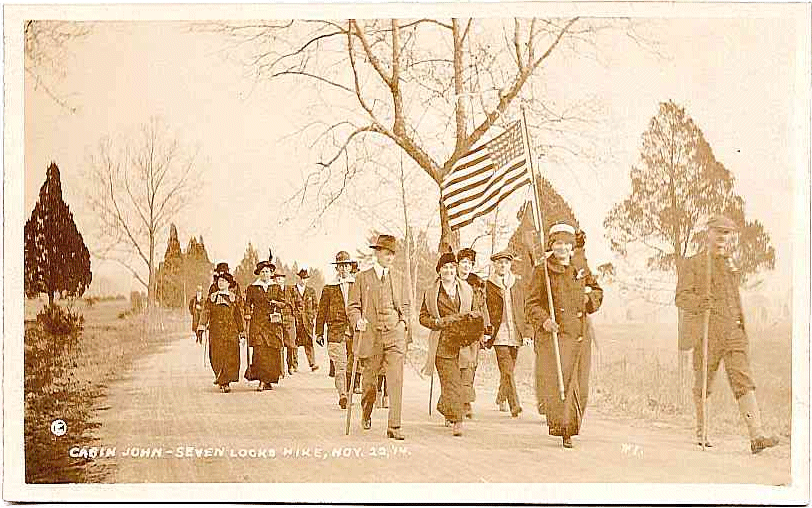
Suffrage marchers in 1914
Cabin John postcard images

Another suffrage march from 1915
Cabin John postcard images
The top right card shows a footbridge built by the Bobingers to allow their hotel guests access to the towpath of the C & O Canal.
The card to the left shows a suffrage march that went through Cabin John in 1914. The rural character of the area can be seen in the background. In 1914 Cabin John was mostly farm land.
Restoring the name of Jefferson Davis to the Cabin John Bridge
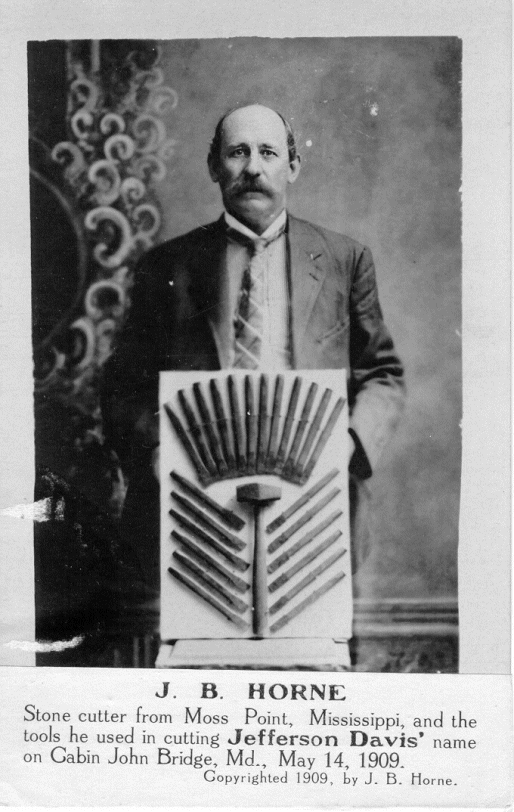
Caption
Cabin John postcard images
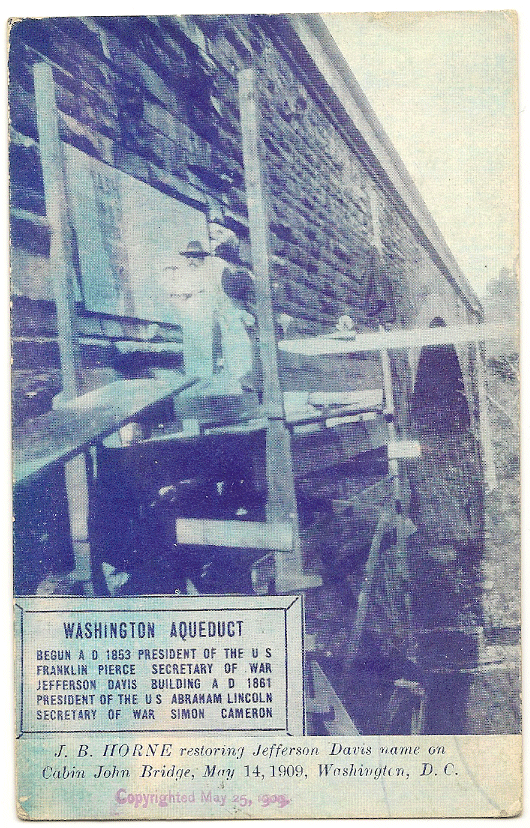
Caption
Cabin John postcard images
At the time the Washington Aqueduct began construction, Jefferson Davis was the Secretary of War of the United States. Davis sided with the confederacy and became the President of the Confederacy, making him less than popular with the U.S. government. In 1861, Davis' name was chisled off the aquaduct dedication plaque which is on the side of the Cabin John bridge.
After the war ended, Confederate organization lobbied to have Davis' name restored to the plaque, arguing that Davis' position at the start of construction was a fact and that a political falling out does not change that facts.
One of Teddy Roosevelt's last actions before leaving office was to pass a measure requiring the restoration of Davis' name. The contract to do the work was auctioned off to F. J. Shelton & Son of Washington D.C. and then sub-contracted to a Mississippi resident named J. B. Horne. Horne bought a new set of tools to perform the task and in May of 1909 he restored the missing name.
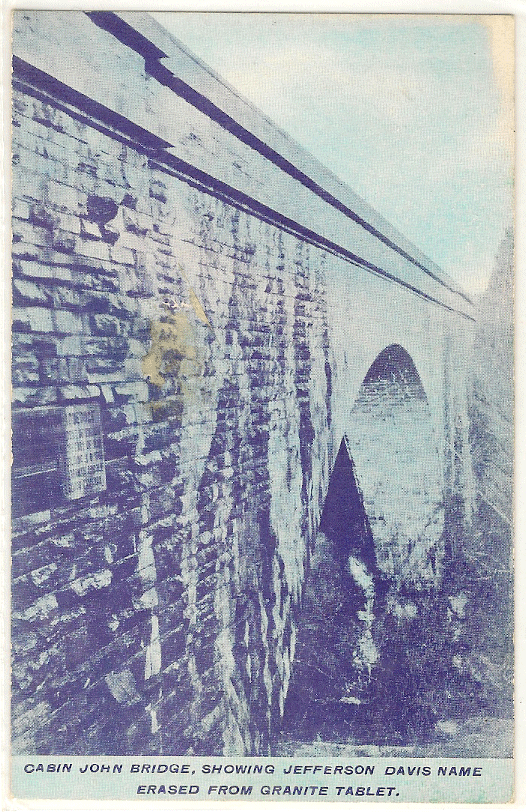
Caption
Cabin John postcard images
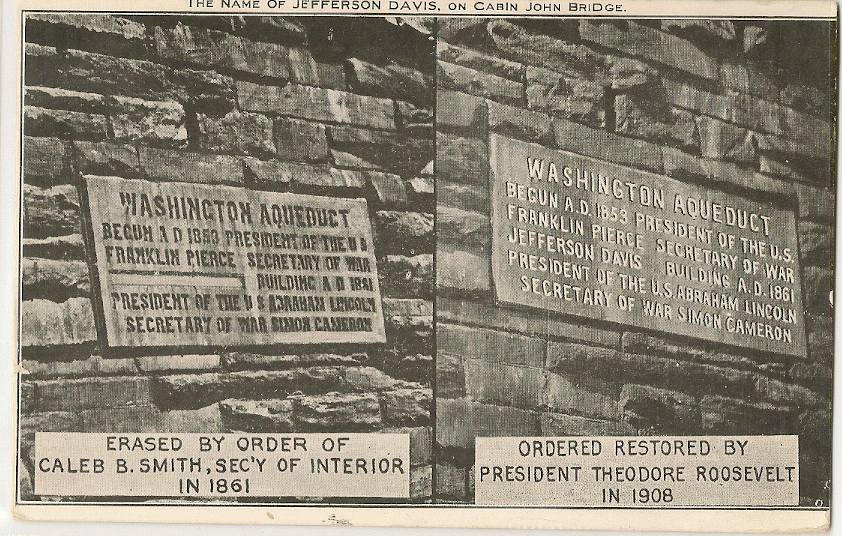
Caption
Cabin John postcard images
Horne was a born businessman, he bought the new set of tools so he could later sell them as the tools used in the restoration.
The task was not insignificant: the removal of Davis' name was done by chisling out a recess where the name had been. Carving the name in the recess would have made it appear to be a change or afterthought, which was not acceptable. The whole surface of the stone was refaced smooth and the entire text was recarved.
After completing the job, Horne sold the tools for considerably more than he had paid for them to a southern woman. The tools are now in a museum in Mississippi.
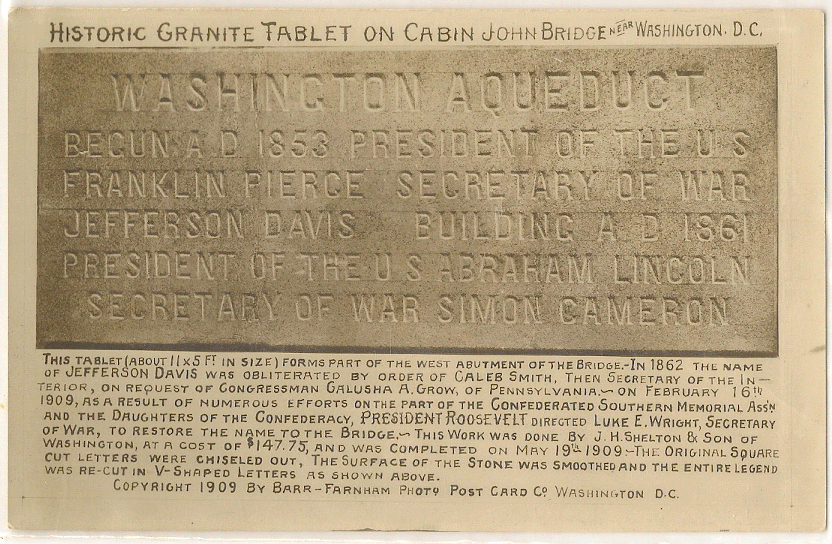
Caption
Cabin John postcard images
The fully restored plaque can be seen on the card to the left. Horne published the three previous cards, capitalizing on his work. Interestingly, the card to the left just omits any mention of Horne's involvement.
An interesting question is 'who chisled off the name?' Records from the time of the work (1861) indicate that a stonecarver by the name of 'John Babinger' performed the task. Joseph Bobinger who started the Cabin John Hotel with his wife Rosa, was a stonecarver on the bridge during its construction, and is likely the one who did the work.
Pioneer Postcards of the Cabin John Bridge

Caption
Cabin John postcard images
In 1893, Congress passed legislation allowing the mailing of Postcards. Prior to that, all U.S. mail was required to be mailed in an envelope. The front of the postcard was for the image and for any text the sender wished to write on the card. The back of the card was strictly for the address and postage. This explains why many early postcards have a wide border area to the side or below the image. In 1907 the laws were ammended to allow the division of the back of postcards into two halves, the left half for writing ad the right half for the address and postage. This allowed more area for writing and allowed the full front of the card to be used for a bigger image.
Real Photo Postcards of the Cabin John Bridge
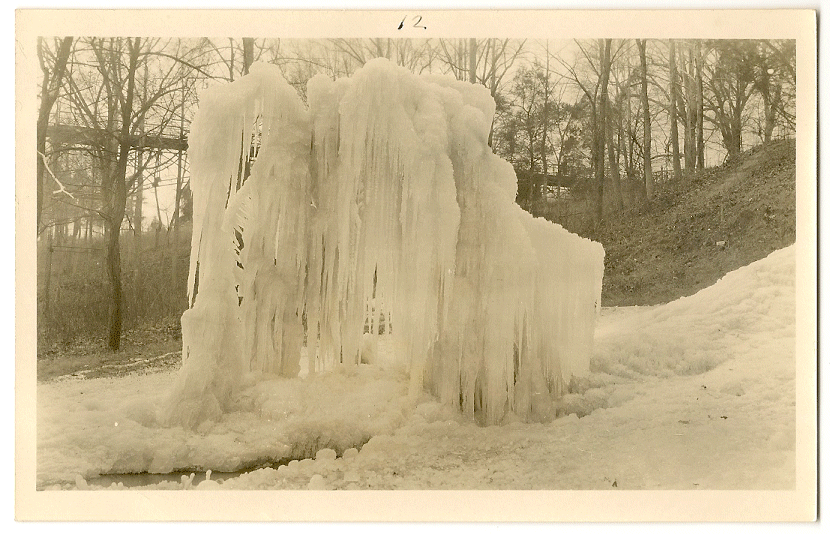
Caption
Cabin John postcard images
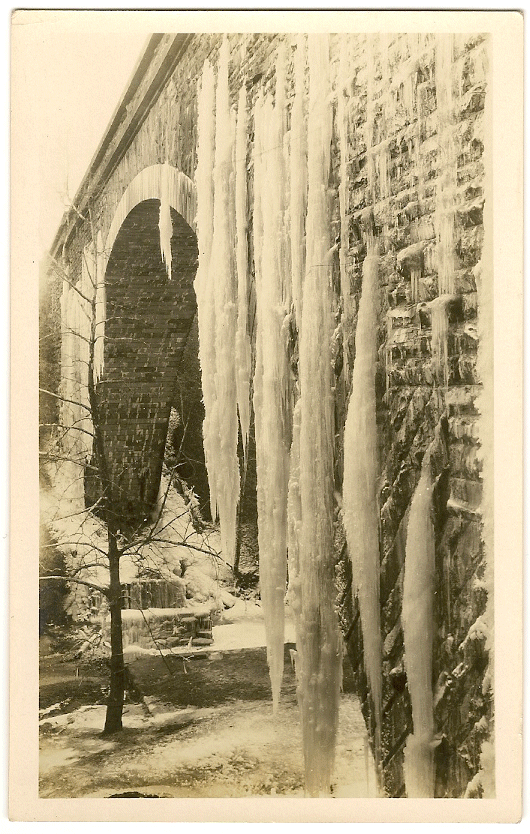
Caption
Cabin John postcard images
In the early years of postcards, many cards had actual photographic images printed on them. These were darkroom printed on photographic paper and usually had fantastic detail. Many later cards had printed images, some of very high quality which were not actual photographic prints.
In 1910 (and in several other years) there was a very cold winter which froze the water inside the aqueduct, making cracks in the brick conduit that runs through the bridge. The resulting leaks produced fantastic icicles on the bridge and huge ice mounds under the bridge. Many photographers came out to photograph the fantastic shapes.
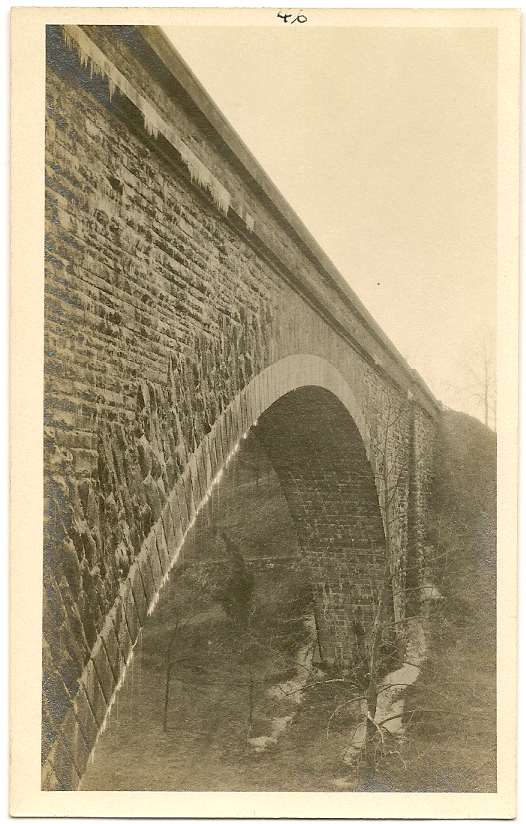
Caption
Cabin John postcard images
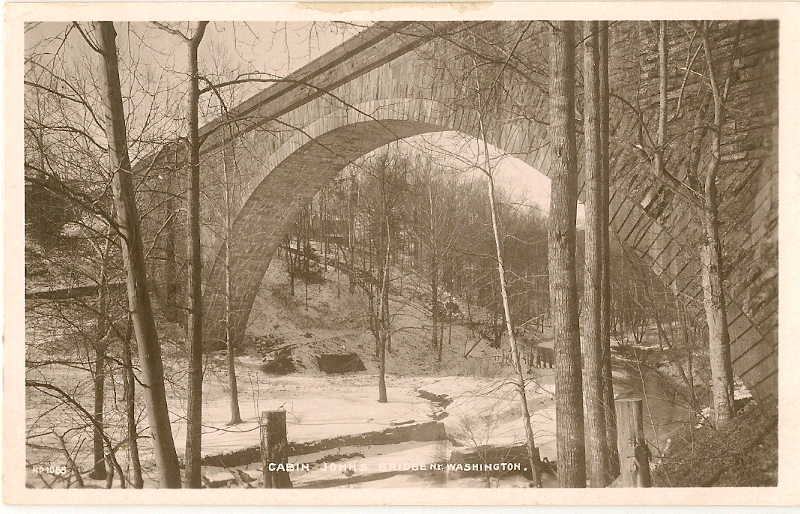
Caption
Cabin John postcard images
here are two more winter scenes, the card to the left is also from 1910, showing the remains of the icicles on the bridge and the remains of the ice on the ground on the far side of the creek.
Almost all of the postcards of the bridge show the downstream face of the bridge; the pioneer card in the previous section is one of the few exceptions.
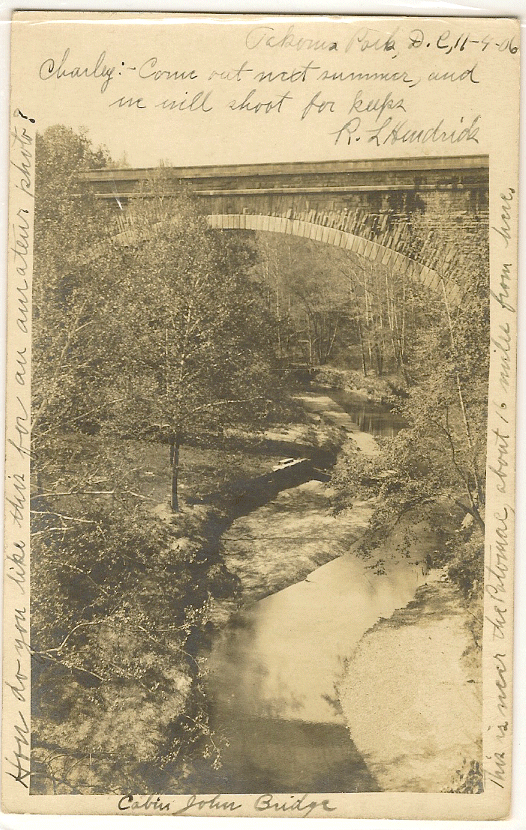
Caption
Cabin John postcard images
Winter scenes of the bridge were nice, but most folks came to see the bridge during warm weather. The creek below the bridge was particularly scenic as seen in the card to the right.
The writing on the face of the card is typical of an early undivided back card where writing was only permitted on the 'non-address' side of the postcard. In this case the writer has wrapped his text all the way around the edge of the card.
Black & White Postcards of the Cabin John Bridge
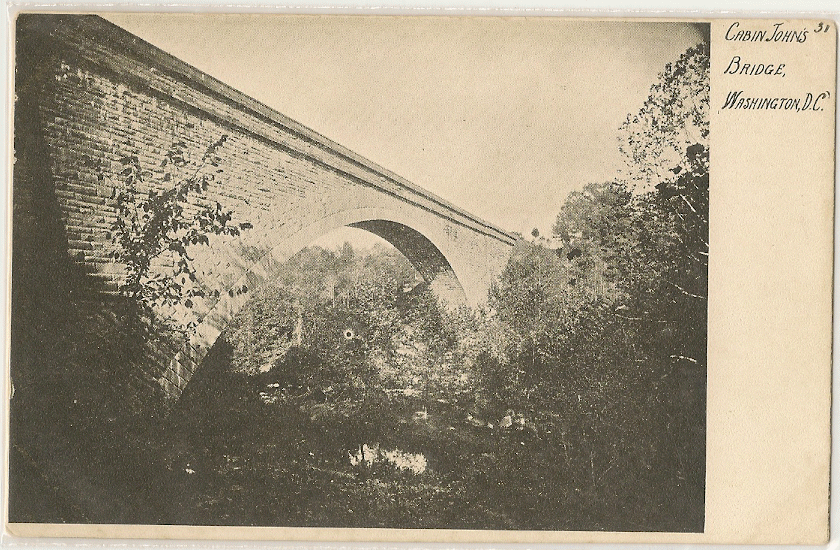
Caption
Cabin John postcard images
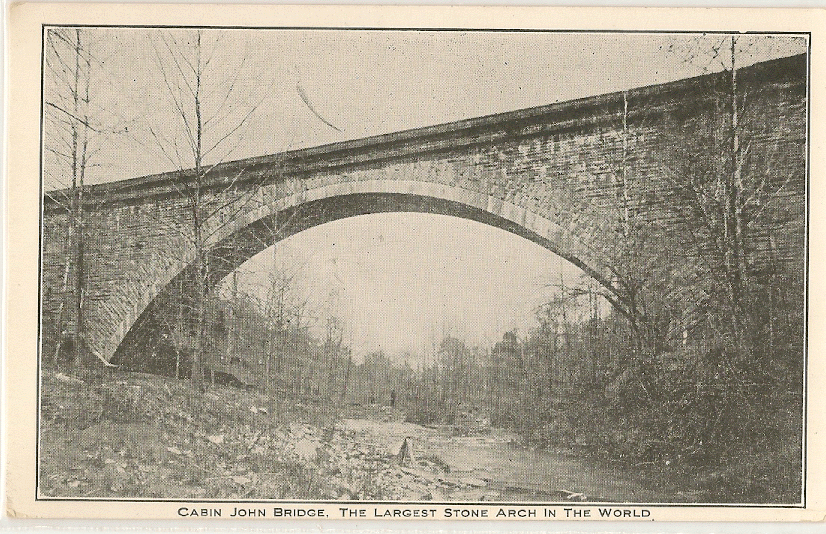
Caption
Cabin John postcard images
After 1907 when the back became available for writing, postcards of the Cabin John bidge became more popular. At this time most cards were printed in Black & White, they were most often printed by a lithographic process which permitted fast printing with very good picture quality.
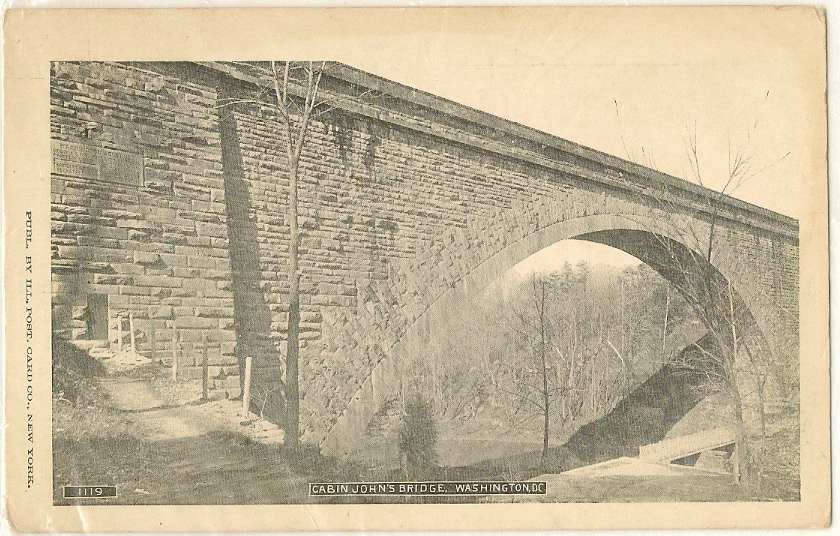
Caption
Cabin John postcard images
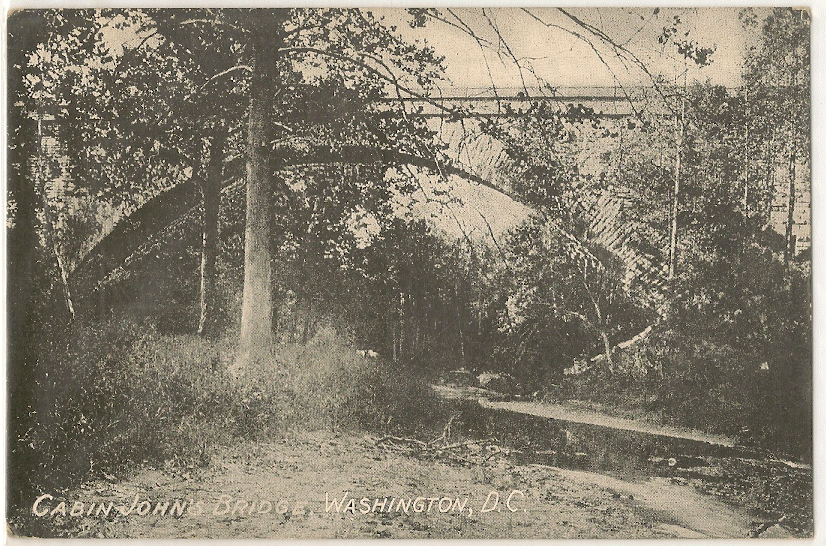
Caption
Cabin John postcard images
Few postcards were printed with publication dates on them so dating can be difficult if the cards are not postmarked. Over the years trees grew in the creek valley, blocking a clear view of the bridge. The size of the trees allow one to, at least, place the cards in a chronological order.

Caption
Cabin John postcard images

Caption
Cabin John postcard images
The card on the right has the most common image there is of the Cabin John bridge. This view can be found in Black & White as well as in color.
Color Postcards of the Cabin John Bridge

Caption
Cabin John postcard images

Caption
Cabin John postcard images
To the left is one of the few postcards of the bridge showing the upstream side of the bridge. The cabin on the right was the photography studio of Alexander Yowell, a resident of Washington D.C. who ran a photographic business at Cabin John on the weekends.
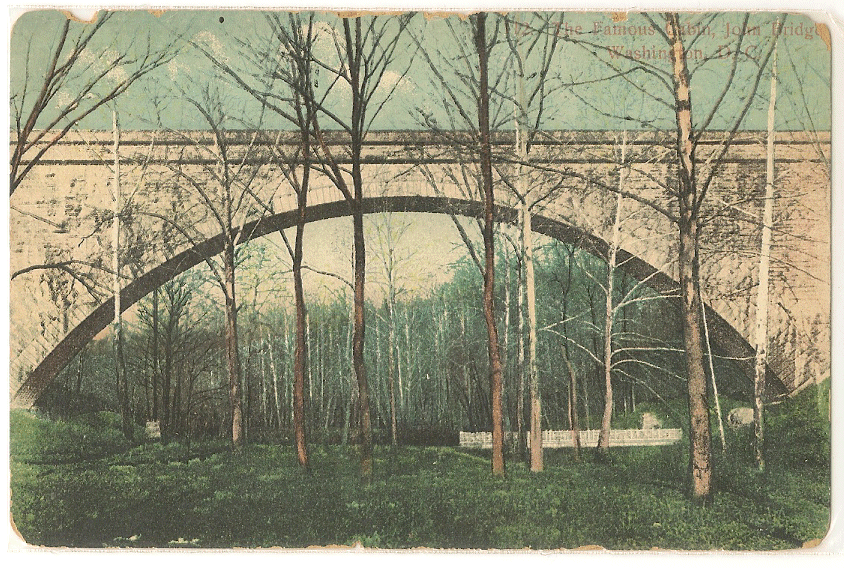
Caption
Cabin John postcard images
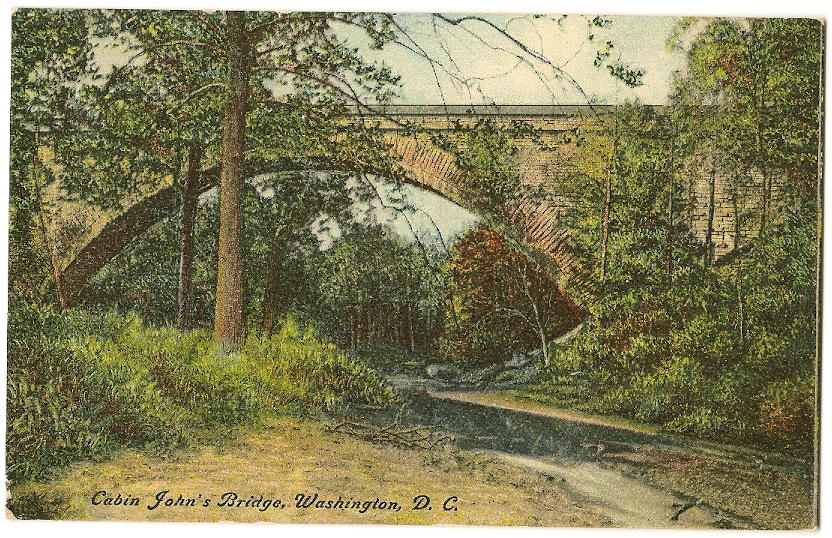
Caption
Cabin John postcard images
Yowell ran his business for many years taking photos of visitors to the bridge, often enclosing them in folders with historic background on the bridge. Many of Yowell's photos show the bridge behind the group of sightseers. His early images were on tin-types with paper photos in later years.

Caption
Cabin John postcard images
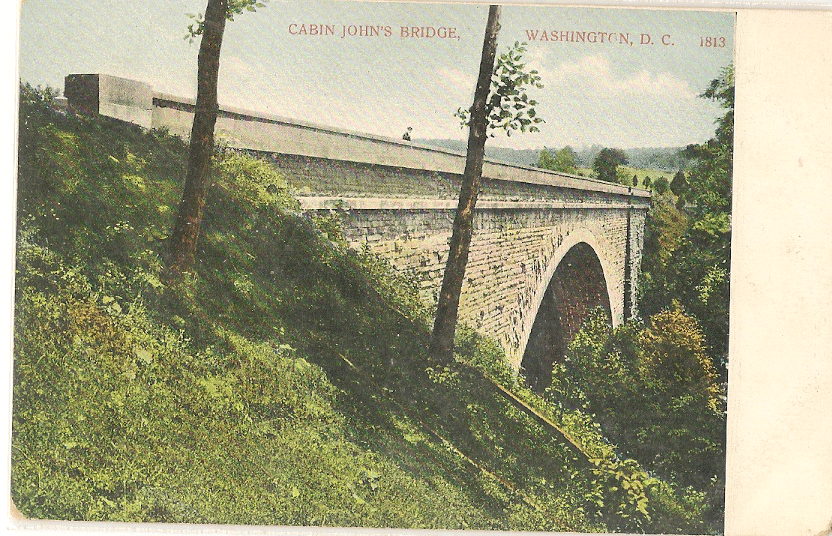
Caption
Cabin John postcard images
The card to the left shows a door at the extreme left of the image. This door used to permit entrance into the bridge. The bridge is not a solid structure, but is constructed in a series of spandrell arches, enclosed by facing walls. Internal doorways connect the individual arches.

Caption
Cabin John postcard images

Caption
Cabin John postcard images
There are five arches on one side of the bridge and four on the other. There is no internal connection between the two sides. Entrance to the bridge was once part of the tourist experience, but the doors are now solidly welded shut.
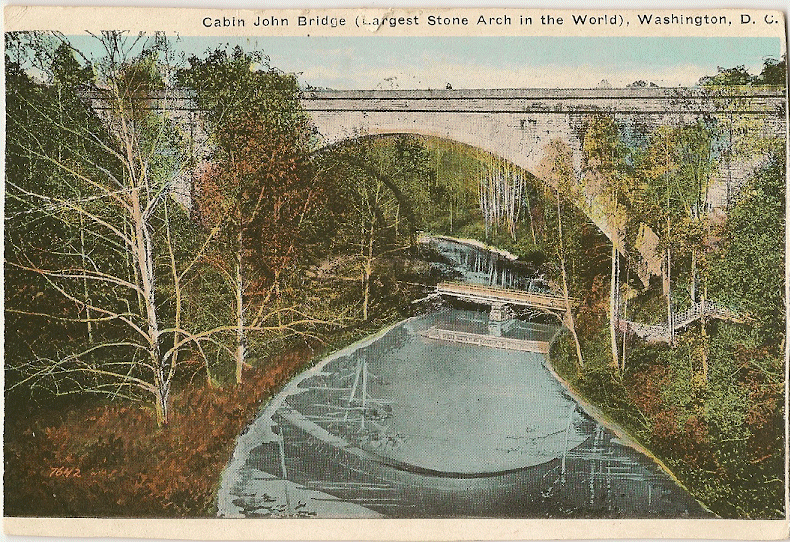
Caption
Cabin John postcard images

Caption
Cabin John postcard images
Around 1901, the Bobingers dammed the creek to flood the valley below the bridge to make the view more scenic. They also built a footbridge across the valley a few hundred feet down the creek to improve access to their property, This bridge is the location that most of the postcard views seen here were taken.
The footbridge is visible in the background of the ice mound card in the real photo card section above.
|




